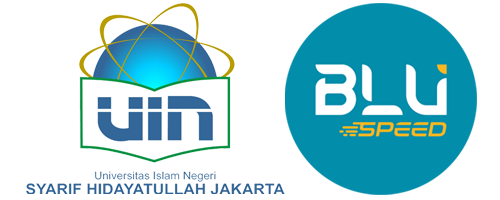PPIM UIN Jakarta launches research findings on digital Da’wa
Ciputat, UIN News Online – The Center for the Study of Islam and Society (PPIM) UIN Jakarta launched research on digital Da’wa with the headline “Dakwah Digital: Narasi Agama di Platform Online dan Televisi Indonesia”, Thursday (04/29/2021). Research has found that internet-based non-conventional TV actively produces conservative orientation religious narratives.
Research findings were presented by Research Coordinator Iim Halimatussa'diyah and Data Scientist Taufik Sutanto. A number of experts were also present to discuss research findings such as the lecturer at the Department of Communication Science of UI Ade Armando, Indonesianis at the Department of Religion Emory University Professor James B. Hoesterey, and Commissioner of the Indonesian Broadcasting Commission Nuning Rodiyah.
In herpresentation, Iim said that the research conducted by herteam was motivated by the high role of television as a medium of preaching and religious narrative for the community. Television actively disseminates religious issues in the form of edutainment, talk shows, and sermons.
“Some survey data shows that the popularity of television as a source of religious knowledge among the younger generation reaches more than 30%,” said Iim.
The research itself, continued Iim, focuses on examining the construction and dissemination of narratives and religious understanding on television as well as the motivation and production processes of religious programs on television. The research was conducted on both television typologies, namely conventional and non-conventional television.
Conventional television is television that utilizes conventional terrestrial satellite frequency sources. Non-conventional television is defined as television that uses the internet (Youtube) to broadcast religious programs.
Academically, research itself uses a mixed method between quantitative and qualitative methods. Meanwhile, the data in this study included two types of data, namely data in the form of text from 1010 videos of religious programs on TV and online interviews with the production team.
There are five important findings. The five cover the development of television religious programs, state control and contestation of religious understanding, and the dominance of religious conservatism. Furthermore, the motivation of religious programs and the popularity of religious programs on television.
In the development of religious programs on television, research notes that there are three phases of development. The three are the conventional TV phase during 1962-1998 where religious narratives are in the form of monologues and recitations of the Koran, the private conventional TV phase 1998-2011 with a profit orientation, and the non-conventional TV phase which actively utilizes new forms of media.
On conventional TV, religious narratives cannot be separated from state control through the Indonesian Broadcasting Commission so that the narrative tends to be moderate. In non-conventional TV, state control is relatively open so that it affects the style of the religious narrative.
Subsequent research found a tendency to dominate the narrative of religious conservatism. The proportion of conservative narratives reached 46.3%, followed by moderate (33.4%), liberal (0.6%), Islamist (0.4%), and radical (0.1%) narratives.
In terms of motivation, as a part of the entertainment industry that fulfills market demands, conventional television produces not only moderate religious narratives but also conservative narratives to attract more audiences.
The opposite occurs in unconventional television. Da'wah based on religious ideology is the main motivation in building narratives and has a major influence on the production process. As a result, various religious understandings that were not accommodated on conventional television were then freely circulated on non-conventional television.
Not only moderate and conservative understandings, religious understanding that is inclined towards Islamic political ideals (Islamist ideology) and liberal understanding also thrives on non-conventional television. Religious conservatism has also strengthened through this type of television program
Furthermore, the research also notes that religious programs on non-conventional TV are more popular than conventional television. Islamist and conservative religious narratives also tend to be more popular than moderate and liberal narratives. The figure who narrates this program also influences this tendency. (usa/zm)

